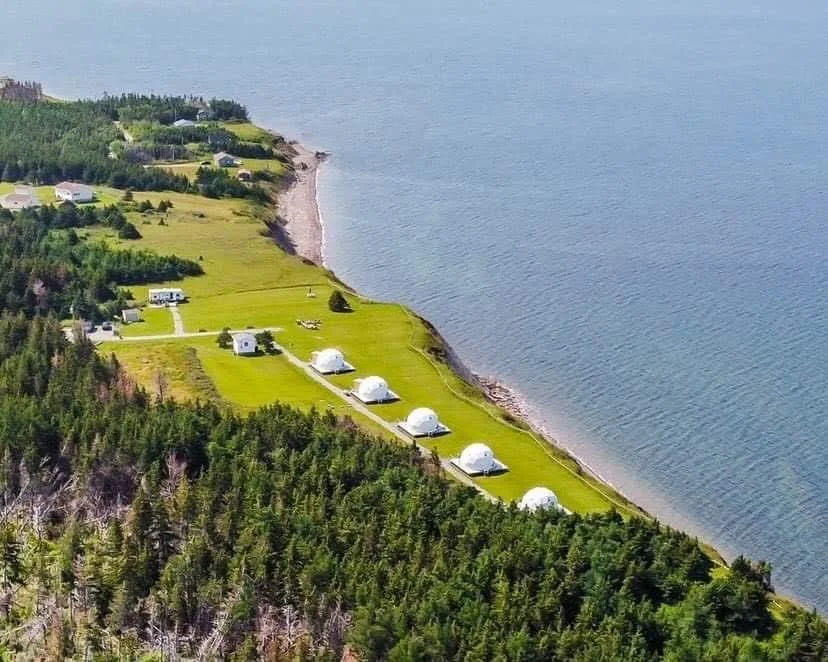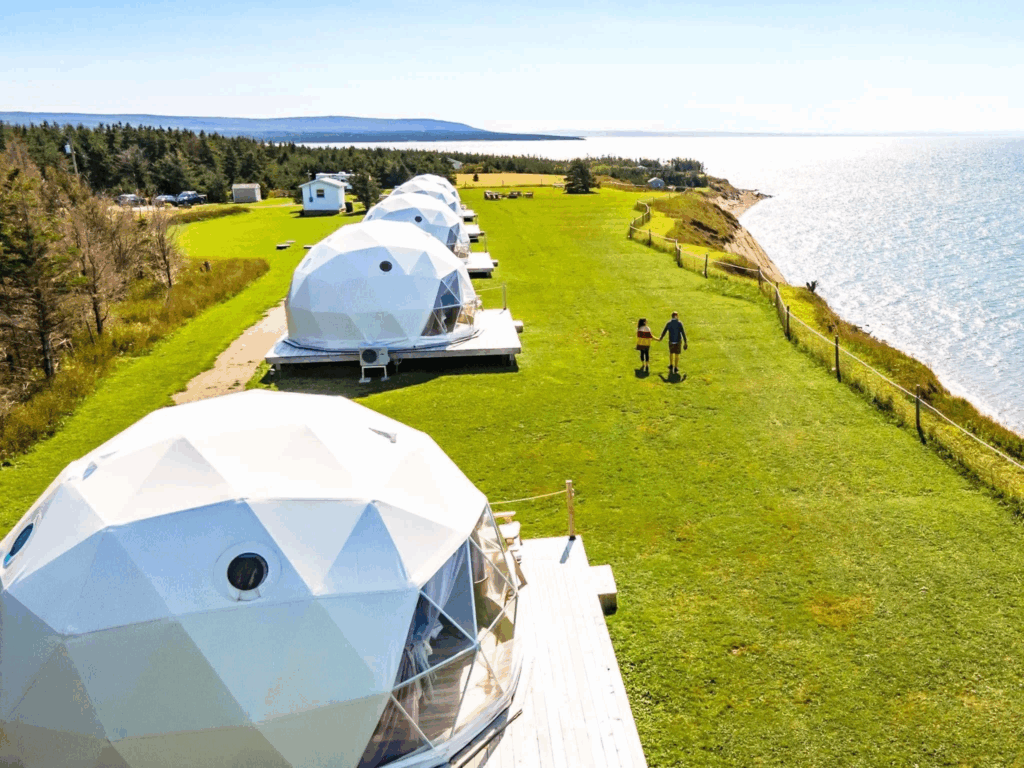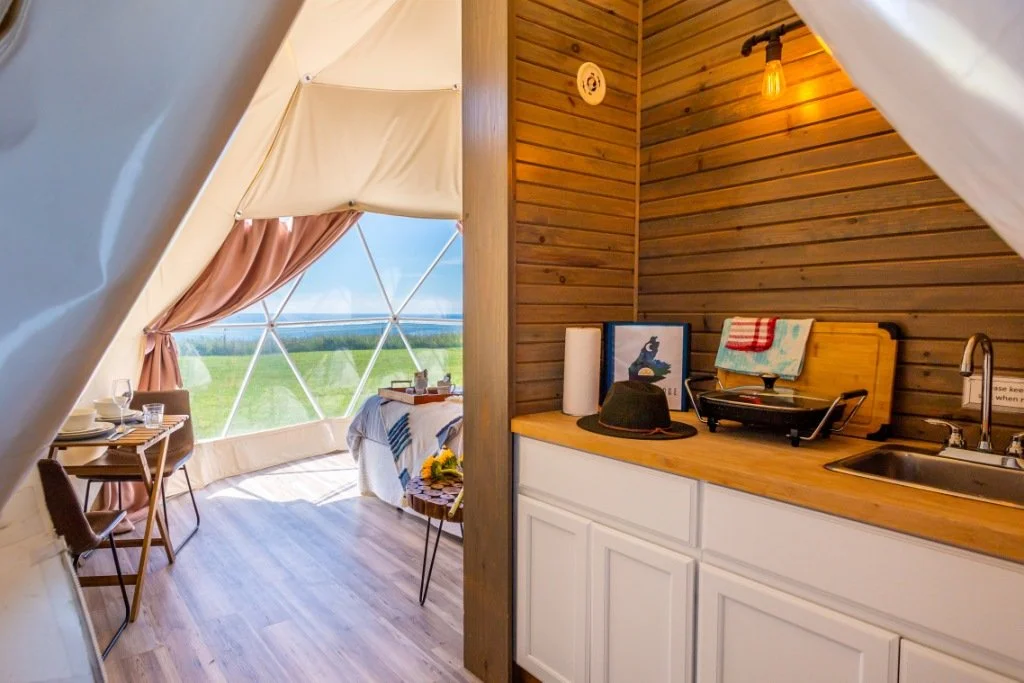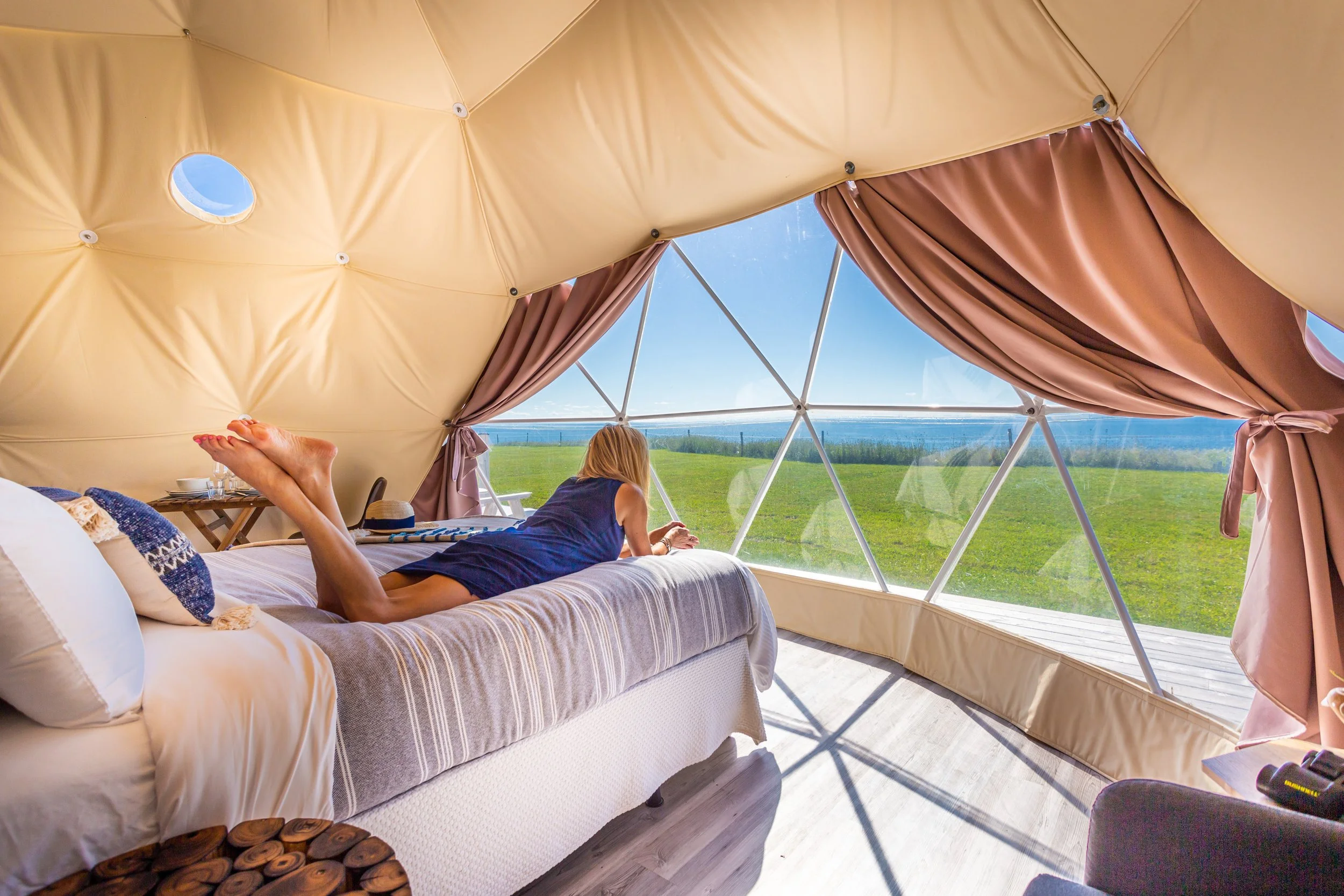Archer’s Edge Luxury Camping in Judique, Cape Breton, is positioning itself within Nova Scotia’s growing outdoor hospitality sector by offering geodesic dome accommodations overlooking the Gulf of St. Lawrence.
The business, established on farmland that has been in the owner’s family since 1891, combines panoramic views with modern amenities as part of the region’s push to expand tourism offerings.
Each dome includes a queen-sized bed, kitchenette, seating area, and bathroom facilities. Units are insulated, ventilated, and equipped with heating and cooling systems.

While technology such as Wi-Fi and televisions is intentionally excluded, guests have access to private balconies, woodland trails, and communal spaces, including a campfire area.
Rates begin at $260 per night with a two-night minimum stay, and check-ins are limited to Mondays, Wednesdays, and Fridays. The property is marketed as adults-only and does not allow pets.
The location places visitors within driving distance of local cultural and entertainment venues such as the Celtic Music Interpretive Centre (8 km), Strathspey Performing Arts Centre (20 km), Glenora Distillery tours (35 km), and the Mabou Farmers’ Market (22 km).

Seasonal festivals, including Kitchenfest and the Celtic Colours International Festival, also contribute to the area’s tourism draw.
The business was founded by a Nova Scotia native who returned to Judique after working in Western Canada.
“After doing some research, I realized there was a need for accommodations in Inverness County with the promising forecast for tourism in Cape Breton,” the owner explained on his website.

“After spending a few days camping on the property and admiring the panoramic view of St. George’s Bay, I realized that the breathtaking views & peaceful surroundings were something I wanted to share with the world.”
For operators and business owners in the outdoor hospitality and glamping sector, Archer’s Edge illustrates how regional heritage and family-owned land can be leveraged into unique accommodations that align with the rising demand for experience-driven travel.
Its model demonstrates the potential of developing smaller-scale, niche offerings that complement broader regional tourism strategies while maintaining sustainability through limited capacity and integration with local culture.
Featured image by Archer’s Edge via archersedge.info


